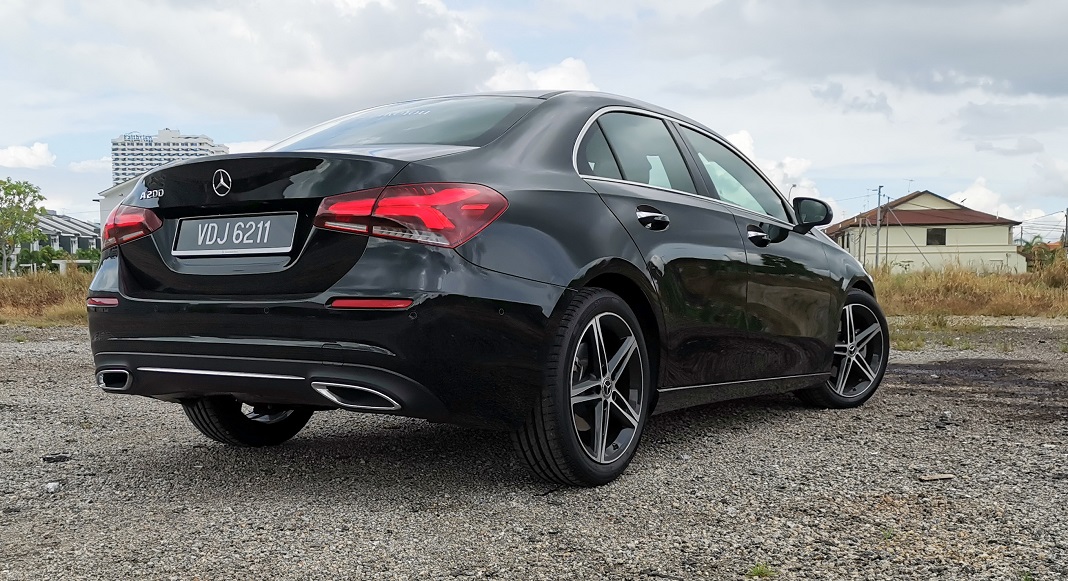
To describe Michael Jopp’s job as the Vice President of Sales & Marketing for Mercedes-Benz Malaysia (MBM) as a tall order is probably an understatement. After a string of record annual sales dating back to 2014 and culminating in the highest-ever total in 2018 where over 13,000 Mercedes-Benz cars were sold, it was always going to be a tough act to follow amidst softening market sentiments.
In between showing us the remote functions of the A-Class via the Mercedes me smartphone app and trying to commit to memory the names of the participating media on a recent drive event, Jopp, who assumed duties in Malaysia in July last year, fielded some searching questions on the state of affairs in Malaysia as well as the wider topics of electrification and the forthcoming New Automotive Policy.

Mercedes-Benz sold fewer cars than last year*, what are your comments on that?
The numbers aren’t in yet but due to the sentiments of the economy, I think the luxury market has been more affected than the mass market segment. There were some internal issues with supply as well, and that also limited our sales potential in the second half of the year. These issues have all been resolved now, so we have full availability, but the challenges with the economy is still there.
*As of November, the number of Mercedes-Benz passenger cars sold was pegged at 9,349 units, with the total expected to just exceed 10,000 for the year.
While it’s hard to predict the future, how do you see the luxury auto market panning out in 2020?
From a product portfolio perspective, we are really well set up for 2020, so that gives us a lot of confidence that 2020 will be a stronger year based on from the strategies that we have set up, but I don’t expect an immediate recovery based on the sentiment of the economy. It won’t come overnight, but from a mid-term perspective, we are looking towards a positive turn by the middle of the year.
Which other areas which MBM is focused on apart from vehicle sales in 2020?
We really try to be a customer-centric organisation, so it’s always about reaching out to our customers and target groups, to open up the brand. I think with the A-Class sedan, there’s a great opportunity. It’s a product that’s really appealing to a younger target group, it’s fun to drive, it’s practical and considering its compact size, I think it is a great looking car, so we have high hopes for the A-Class sedan in 2020 to be a significant contributor.

Obviously, there are more compact class models coming up, for example the new GLA and also the GLB SUVs
From a portfolio perspective, there are a lot of opportunities, but on the products we already have now, our current GLA is doing really well, we have created nice run-out packages with good equipment levels, so I’m confident with the existing GLA can still drive sales. We also see a strong growth potential with the updated GLC SUV, along with the C-Class and E-Class.
 Moving into electrification, is there a cohesive regional strategy in ASEAN?
Moving into electrification, is there a cohesive regional strategy in ASEAN?
I would have to say ‘no’ as all countries have different policies, support levels and strategies. My observation of Thailand is that it has a more advanced policy in terms of support, charging infrastructure and ecosystem. For Malaysia, there are incentives for hybrid and that obviously is driving hybrid sales because they have a competitive advantage over ICE (Internal Combustion Engine) models. That is good for customers, but ultimately, I think it is not enough.

It is important to set up a charging infrastructure, to make full use of electric cars. It’s good if you can charge at home, good enough for plug-in hybrids but it would be better if you can also charge at your work place, during shopping…that would be important as the next step in electric mobility, and that would rely on the availability of a charging infrastructure.
With the new impending National Automotive Policy (NAP), what would MBM hope to see?
For the New Automotive Policy to give a long-term direction, obviously we haven’t seen the final execution yet, but we know the main pillars. From a manufacturer’s perspective, I think clarity on the incentives for hybrids and fully electric vehicles is crucial because that ultimately determines the demand. Secondly, the direction when it comes to charging infrastructure which is key to the adoption of electric mobility in Malaysia.
 Daimler recently announce some layoffs by 2022, does it have any impact on Malaysian operations or regionally?
Daimler recently announce some layoffs by 2022, does it have any impact on Malaysian operations or regionally?
The number has been published but execution has not been defined. We’ll have to wait and see. The intention is clear; in this challenging environment, a lot of investment is required to make sure we can sustainably grow and that we can manage both investments for ICE and BEV (Battery Electric Vehicle).
